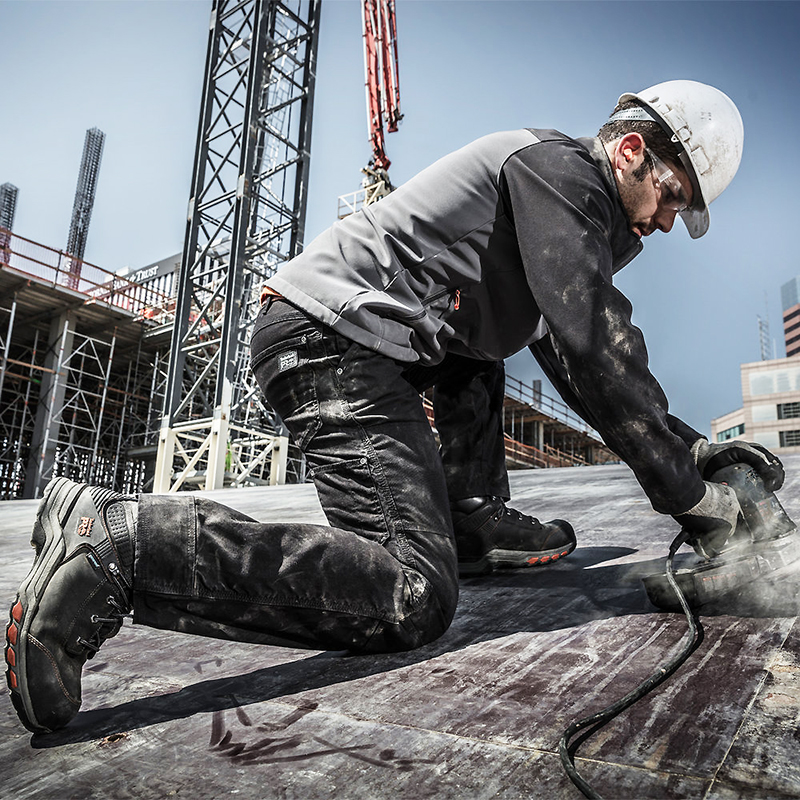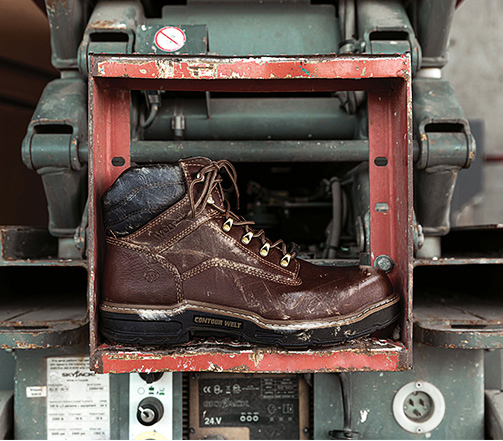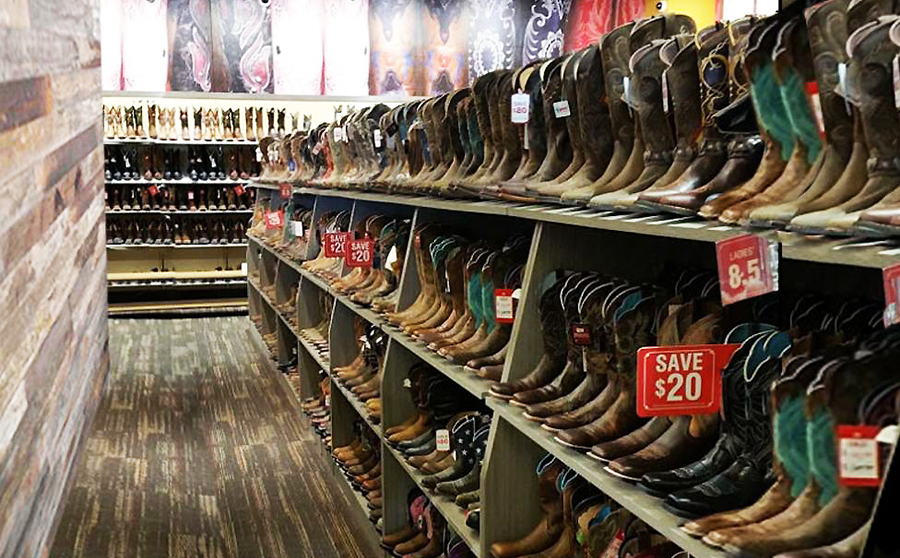<span style="color: #a3a3a3;">Boot Barn Inc. made considerable sequential progress in its fiscal second quarter from its fiscal first-quarter results as the trend in comps, net sales and earnings all saw improvement. Consolidated same-store sales results improved throughout the quarter, turning positive in September and continuing into October.
On a conference call with analysts company President and CEO Jim Conroy outlined current trends for the business noting that fiscal October same-store sales in the company’s retail stores were flat to last year, and online sales were said to remain very strong. “While work boots continue to be our strongest performing category, we are also encouraged to see more broad-based growth across other categories with momentum building in denim, hats and western boots, all of which are now comping positive quarter-to-date,” he detailed.
Looking at the fiscal second quarter ended September 26, Boot Barn net sales decreased 1.4 percent to $184.5 million, driven by a 5.1 percent decline in same-store sales versus a 14.9 percent comp decline in the fiscal first quarter. Same-store sales in retail stores declined 9.1 percent (-27.1 percent decline in Q1) and e-commerce same-store sales increased 17.6 percent in the period after a 51.9 percent increase in fiscal Q1. The decrease in retail store sales was primarily the result of decreased traffic in the stores that management attributed to COVID-19 stay at home trends. Consolidated same-store sales declined 9.8 percent in July, fell 8.9 percent in August, before turning positive in September, and increasing 1.3 percent. The acceleration in consolidated same-store sales was said to be driven by sequential improvement in retail stores. The majority of the online growth during the quarter was reportedly driven by a 42 percent increase in sales on BootBarn.com with a “healthy year-over-year increase in both traffic and conversion.”

Conroy reported that sales of BootBarn.com now make up more than 50 percent of the e-commerce business. “While e-commerce sales in the rest of our online business were down low-single-digits year-over-year, we have seen significant improvement in e-commerce profitability, partly as a result of the rebranding of the Sheplers.com site and the associated changes we made in our promotional posture to reflect a more full-price selling model,” he said.
During the second quarter, exclusive brand penetration grew to 24.9 percent, an increase of more than 350 basis points compared to the prior-year period. “As a reminder, our exclusive brands are created and nurtured as true brands and not as inexpensive alternatives to third-party brands,” explained Conroy. “This focus on brand development has positioned Cody James and Shyanne as our number two and number four top-selling brands in the store. We believe our exclusive brands in combination with the assortment we offer from third-party vendor partners will continue to drive traffic to our stores and our e-commerce site and further develop loyalty from our customers. We expect to see continued growth in our exclusive brand penetration in the range of 200-to-300 basis points during the current fiscal year.”
 Conroy went on to say work boots continue to be the retailer’s strongest performing category. Sales of non-flame resistant work apparel were up reportedly up in the quarter as the retailer’s “core customer” purchased functional products for their work needs. “In contrast, demand for our FR (fire-resistant) work apparel business was soft due to high unemployment for our customers working in the oil and gas industries, which pressured same-store sales at some of our stores in Texas and other oil-dependent markets. In addition, sales of both men’s and ladies western boots and apparel declined during the quarter,” he detailed.
Conroy went on to say work boots continue to be the retailer’s strongest performing category. Sales of non-flame resistant work apparel were up reportedly up in the quarter as the retailer’s “core customer” purchased functional products for their work needs. “In contrast, demand for our FR (fire-resistant) work apparel business was soft due to high unemployment for our customers working in the oil and gas industries, which pressured same-store sales at some of our stores in Texas and other oil-dependent markets. In addition, sales of both men’s and ladies western boots and apparel declined during the quarter,” he detailed.
“While we experienced several headwinds related to COVID-19 that impacted sales transactions during the quarter, our underlying business remains solid,” quipped Conroy. “Low oil prices impacted employment in some of our markets, most notably in West Texas, while COVID-related restrictions have slowed travel in some of our markets that benefitted from tourism. Additionally, events such as rodeos and concerts have been canceled across the country. These events typically provide a catalyst for our customers to get into our stores and purchase boots and apparel in preparation for attending the event.”
<span style="color: #a3a3a3;">Gross margins narrowed 150 basis points to 30.1 percent of sales in fiscal Q2 compared to 31.7 percent of sales in the prior-year period, Boot Barn saw a 110 basis point increase in buying and occupancy costs and a 50 basis point decline in merchandise margin rate.
Conroy said its merchandise margin was strong in both stores and online. “We have maintained our full price selling philosophy with minimal markdowns and promotions, resulting in growth in product margin which helped to partially offset deleverage in buying and occupancy costs, higher freight expense and margin headwinds due to channel mix,” he explained. The deleverage in buying and occupancy costs were said to be primarily a result of lower sales due to COVID-19. Merchandise margin declined 50 basis points, of which 30 basis points was reportedly a result of higher e-commerce penetration and the balance a result of higher freight, partially offset by better product margins.
Mr. Conroy said that strong full-price selling combined with the retailers’ recent cost reduction efforts resulted in better-than-expected second-quarter net income of $5.8 million, or 20 cents per diluted share, compared to $7.7 million, or 26 cents per diluted share in the prior-year period, which included a 2 cents per share benefit due to income tax accounting for share-based compensation.
Inventory at quarter-end decreased approximately 14 percent compared to last year, both on a comp-store basis and on a total company basis. The decrease in total company inventory was said to be driven primarily by the reduction in comp-store inventory and a decrease in inventory in the retailer’s Fontana distribution center, partially offset by growth in inventory for new stores added in the last 12 months.
Boot Barn ended the quarter with a total of $179.3 million of debt outstanding, including a $111 million term loan and $68 million outstanding on its $165 million revolving line of credit. Management said they reduced their line of credit borrowings by approximately $62 million during the second quarter, resulting in $97 million of remaining availability.
The retailer reportedly had $35.7 million in cash on hand at the end of the quarter.
Boot Barn opened one new store during the fiscal second quarter and an additional store in October, bringing the total store count to 266 stores. The retailer plans to open in both new and existing markets and continue to target a total of 15 new store openings in fiscal 2021, including the seven stores opened year-to-date.
“While we have intentionally slowed new unit growth this fiscal year as a result of COVID-19, we remain confident in our long-term ability to expand our store base by 10 percent or more each year in a more normalized external environment,” Conroy concluded.
Given the continued lack of visibility into the business as a result of COVID-19, the company did not provide any third-quarter guidance at the time of the call.
Photos courtesy Boot Barn
















